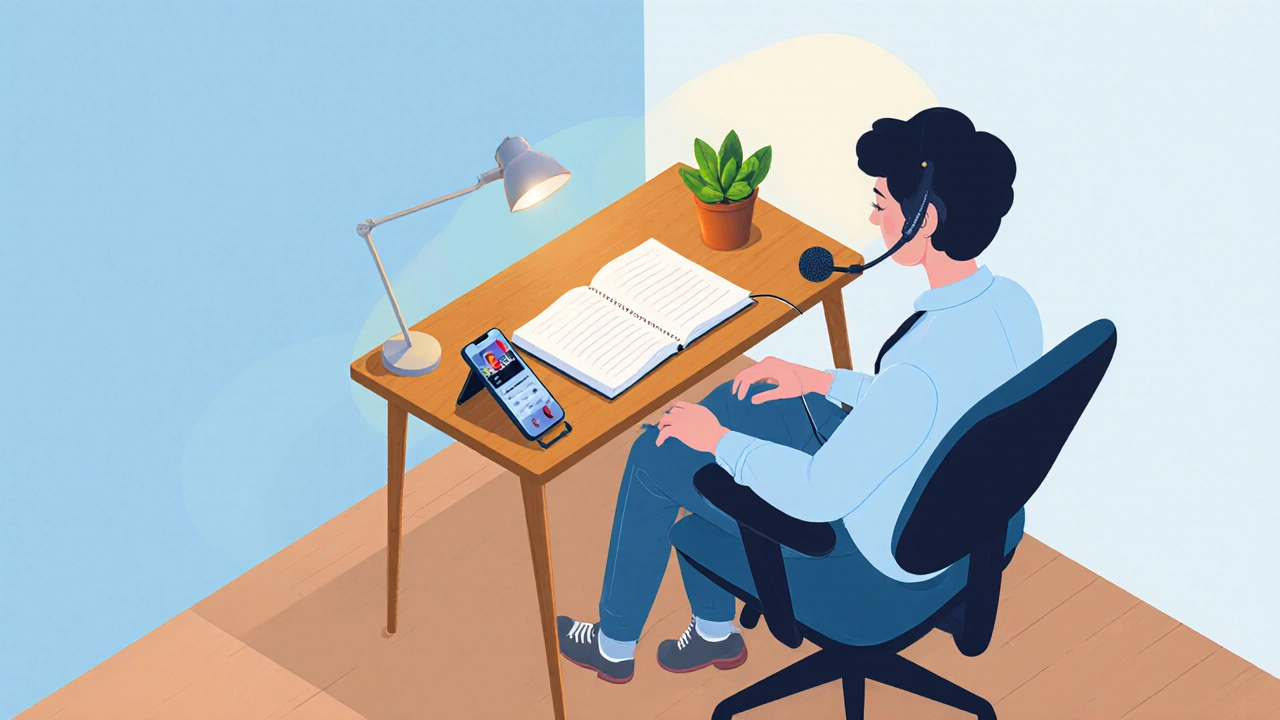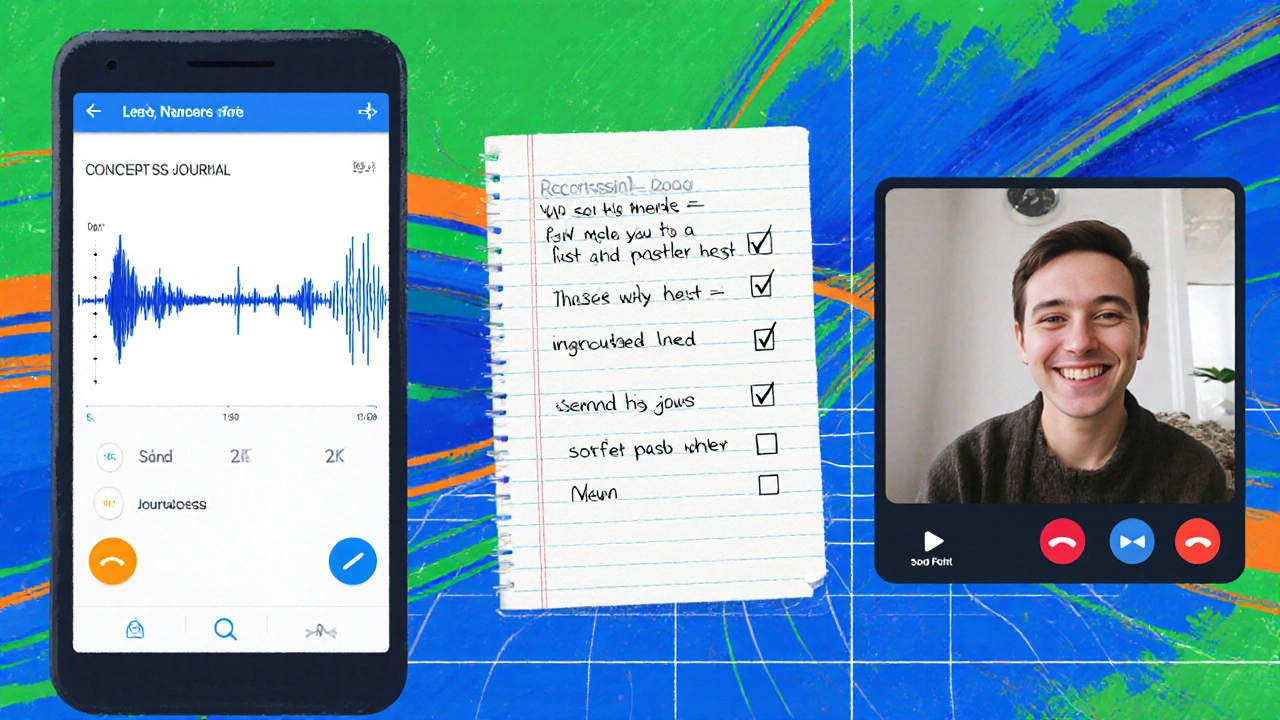When you want to learn English speaking fast, it helps to first know what English speaking means the ability to convey thoughts clearly and naturally using spoken English actually looks like. You don’t need a classroom or pricey tutor; a focused home routine can shave months off the usual learning curve.
Key Takeaways
- Use high‑impact techniques like shadowing, language exchange, and self‑recording.
- Set up a dedicated practice corner with minimal distractions.
- Follow a 30‑minute daily blueprint that mixes listening, speaking, and feedback.
- Track progress with a simple journal and adjust your routine weekly.
- Leverage free apps and online communities for instant correction.
Understanding the Goal
Before you jump in, clarify the exact outcome you want. Are you aiming for smoother conversations with friends, better performance in job interviews, or simply more confidence on video calls? Defining a measurable target-like “hold a 5‑minute chat without hesitation”-gives you a clear finish line and makes daily practice feel purposeful.
Set Up Your Practice Space
A practice corner is a small, clutter‑free spot where you can focus solely on speaking activities works wonders. Choose a quiet room, add a comfortable chair, a small table for notes, and a phone or laptop for recordings. Good lighting helps you see facial movements if you record yourself, and a headset reduces background noise.
Core Techniques That Accelerate Fluency
Three proven methods stack together like a fast‑track ladder. Each one targets a different skill: listening accuracy, muscular memory, and real‑world interaction.
- Shadowing technique involves listening to a native speaker and repeating the speech in real time, matching intonation, rhythm, and speed. It trains your ear and mouth simultaneously.
- Language exchange pairs you with a native English speaker who wants to learn your language, creating a win‑win conversation practice. You get authentic dialogue and instant correction.
- Self‑recording means capturing your own voice while answering prompts, then comparing it to a model and noting gaps. It gives concrete data on pronunciation and fluency.

Comparison of Fast English Speaking Techniques
| Technique | Time Needed per Day | Main Focus | Best For |
|---|---|---|---|
| Shadowing | 10‑15 minutes | Pronunciation & rhythm | Beginners who need mouth muscle memory |
| Language Exchange | 20‑30 minutes | Real‑world conversation | Intermediate learners seeking spontaneity |
| Self‑Recording | 10‑12 minutes | Self‑analysis & correction | All levels wanting measurable improvement |
Daily Routine Blueprint (30 Minutes Total)
- Warm‑up (3min): Recite a short tongue‑twister or a favorite quote. This loosens the vocal cords.
- Shadowing (7min): Choose a 1‑minute podcast clip. Play it twice-first to listen, then to repeat word‑for‑word while matching the speaker’s pace.
- Language Exchange (15min): Use a free platform like Tandem or HelloTalk. Start with a greeting, then discuss a daily‑life topic. Ask your partner to note any unnatural phrasing.
- Self‑Recording (5min): Answer a prompt (e.g., “Describe your favorite meal”). Record, listen back, and mark three areas for improvement.
Stick to the same time slots each day; consistency beats intensity when you’re training a new skill.
Tools and Apps That Supercharge Practice
While you can do everything with a phone, a few dedicated apps speed things up.
- Pronunciation app such as ELSA Speak, offers AI‑driven feedback on individual sounds and intonation.
- Immersive environment like Netflix with subtitles or YouTube channels that teach everyday English exposes you to natural speed and slang.
- Feedback loop is a simple habit of asking a friend or using an online community to correct your recorded clips within 24hours.

Common Pitfalls & How to Dodge Them
Even motivated learners stumble. Spotting the traps early prevents wasted time.
- Only memorizing scripts. Real conversation is unscripted. After a week, replace scripted dialogues with spontaneous topics.
- Neglecting listening. Speaking without good input leads to fossilized errors. Pair each speaking session with a short listening activity.
- Skipping feedback. Self‑assessment is blind. Use the progress journal to log daily errors and track how many you fix over a month.
Tracking Progress the Smart Way
Quantify improvement instead of guessing.
- Record a 30‑second intro on Day1. Save the file.
- Every seven days, record the same intro.
- Rate yourself on three criteria-clarity, speed, and filler words-using a 1‑5 scale.
- Plot the scores in a simple spreadsheet. A steady upward line confirms you’re on track.
When you see a plateau, switch up a technique or increase exposure time by five minutes.
Next Steps & Free Resources
Now that the framework is set, grab a few free tools to kick‑start your journey.
- BBC Learning English - short audio clips for shadowing.
- LibriVox - public‑domain audiobooks for longer listening.
- Tandem - language‑exchange partner matching.
- ELSA Speak - 7‑day free trial for pronunciation feedback.
- Google Docs - create your progress journal to log daily observations and corrections.
Commit to the 30‑minute blueprint for two weeks, then reassess. You’ll notice smoother sentences, fewer “uh‑uh‑uh” moments, and a confidence boost that feels like a genuine breakthrough.
Frequently Asked Questions
How much time do I really need each day?
Consistent 30 minutes split across shadowing, conversation, and self‑recording yields noticeable fluency gains in 6‑8 weeks. Shorter bursts work, but regularity beats occasional marathon sessions.
Can I skip the language‑exchange part if I’m shy?
You can start with text‑based exchanges or voice notes, then gradually move to live calls. The key is exposure to authentic speech, even if it’s asynchronous at first.
Do I need expensive equipment to self‑record?
A smartphone’s built‑in mic is enough. If you want clearer audio, a low‑cost lapel mic ($10‑15) helps, but it’s not mandatory for progress.
How can I stay motivated when I hit a plateau?
Switch techniques-add a new podcast, try a different accent, or set a micro‑goal like “use three new idioms today”. Fresh challenges reignite interest.
Is it okay to watch movies with subtitles on?
Yes, especially with English subtitles. It reinforces hearing‑reading links and gives you natural sentence structures to imitate later during shadowing.

